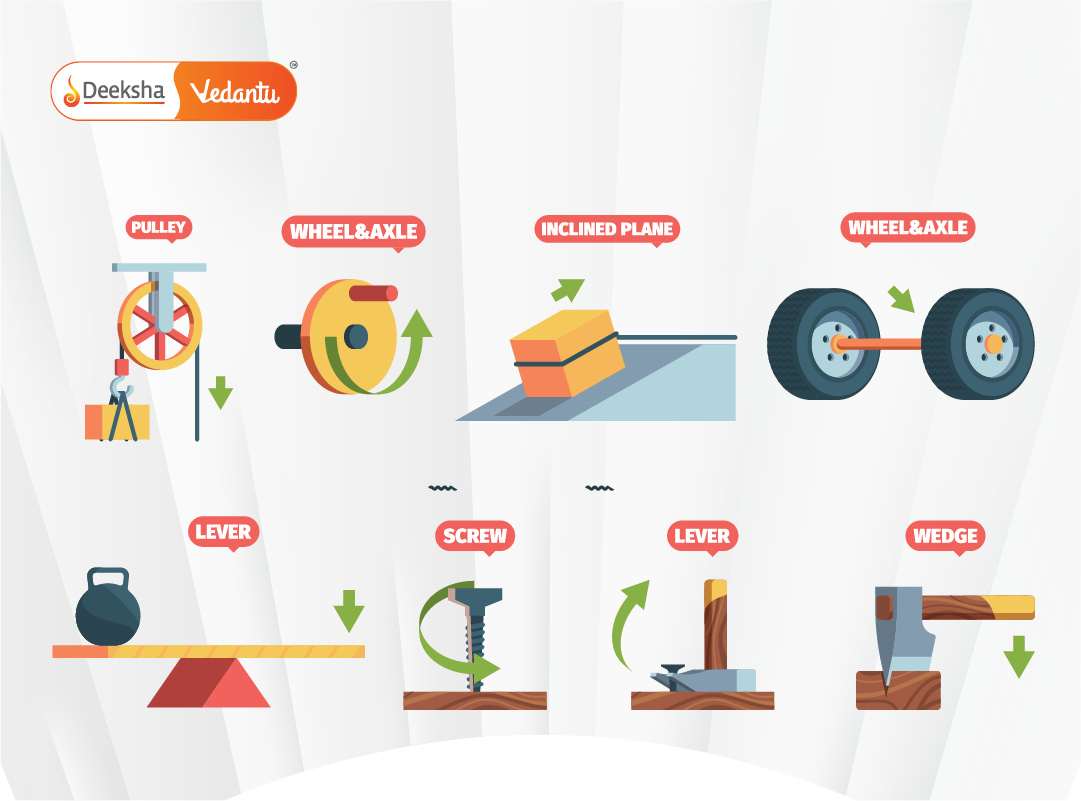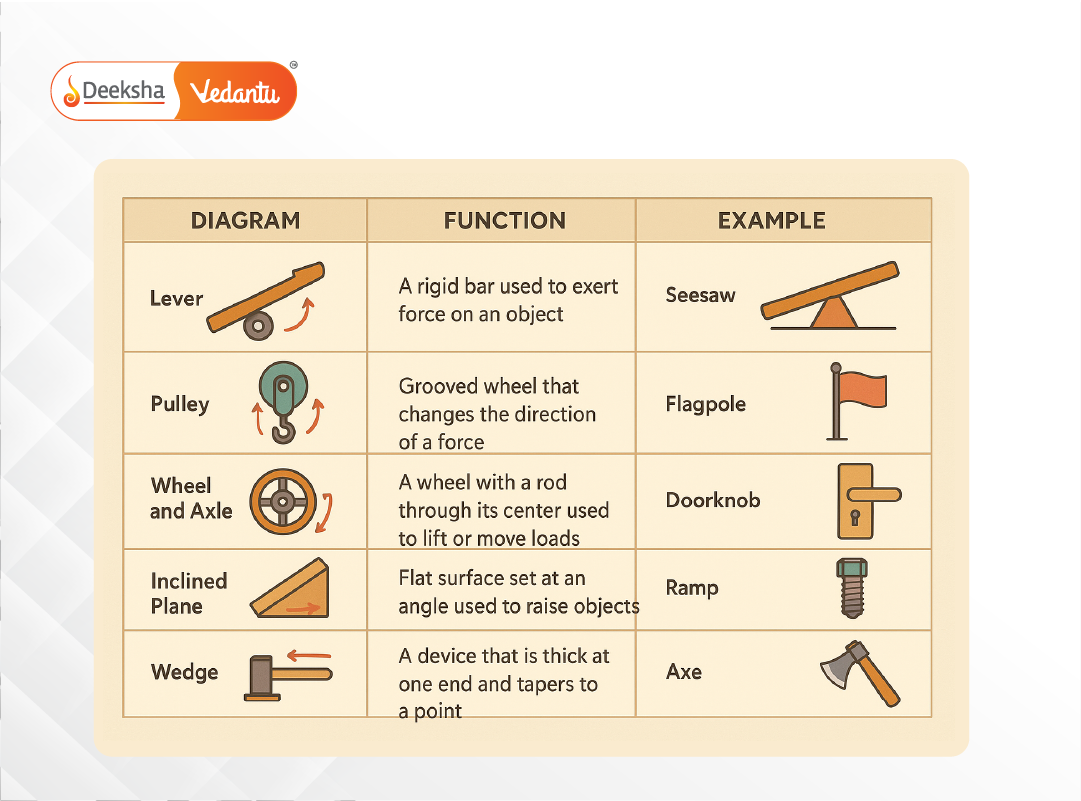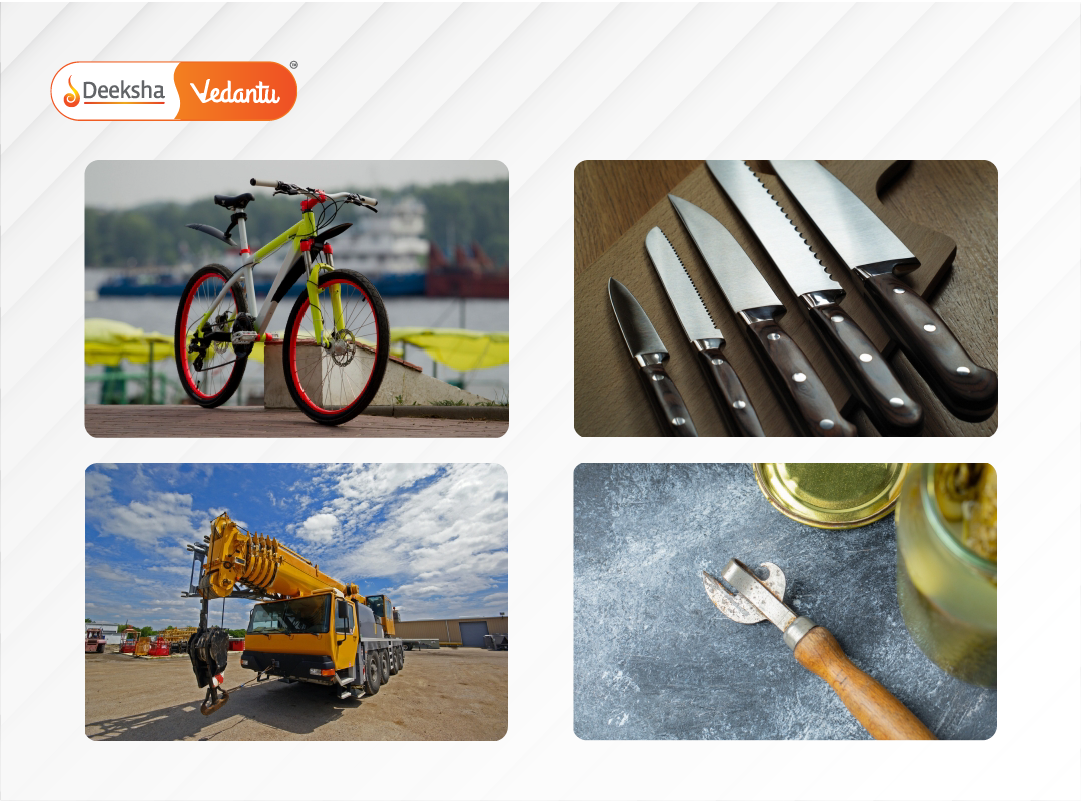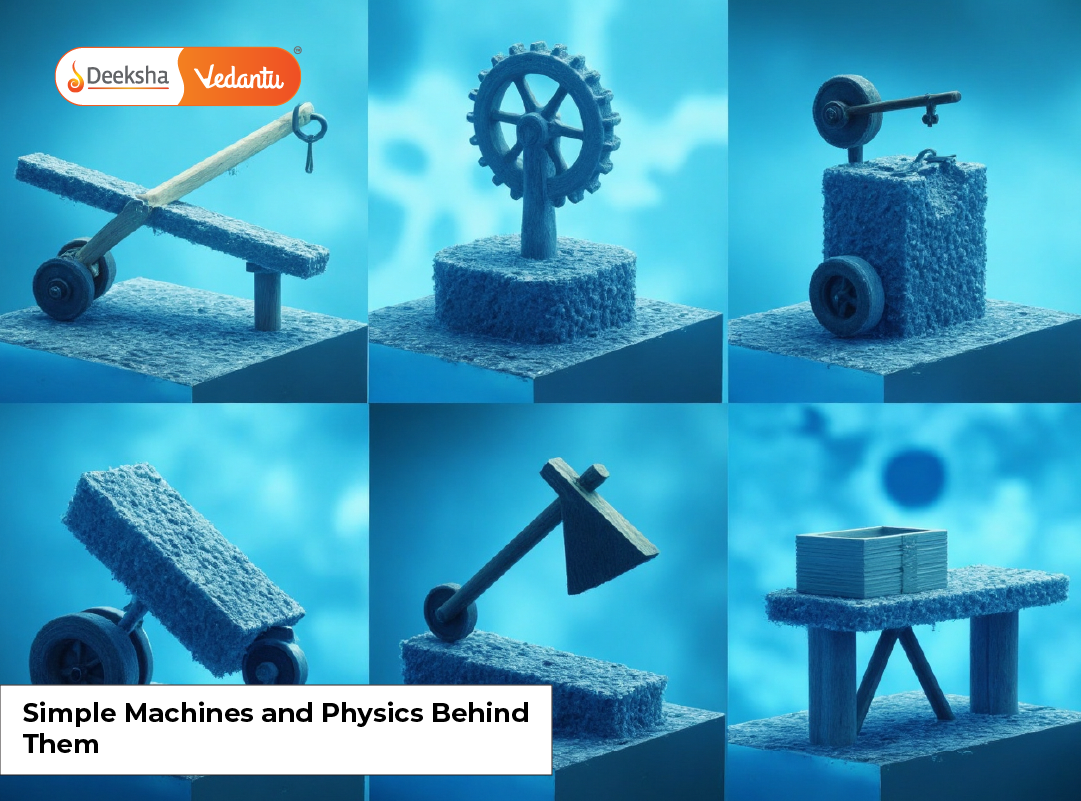Simple machines are the building blocks of all mechanical devices we see around us. Whether it’s a pair of scissors, a seesaw, or a ramp, simple machines help us perform tasks with less effort. They are fundamental to physics and engineering and offer insight into how forces and motion work in everyday life. By examining these devices, students can appreciate how ancient tools have evolved into Periodicity in the Periodic Table
Understanding of simple machines not only helps in academics but also promotes practical thinking and innovation.

What Are Simple Machines?
A simple machine is a device that changes the direction or magnitude of a force. It helps in doing work with less effort by either increasing the force applied or changing its direction. Unlike complex machines, simple machines have few or no moving parts. These basic machines form the foundation of more advanced mechanical systems found in engineering, manufacturing, and robotics.
There are six types of simple machines:
1. Lever
A lever consists of a rigid bar that pivots around a fixed point called the fulcrum. Depending on where the effort and load are applied, levers are classified into three types:
- First Class: Fulcrum is between effort and load (e.g., seesaw)
- Second Class: Load is between effort and fulcrum (e.g., wheelbarrow)
- Third Class: Effort is between load and fulcrum (e.g., tweezers)
Levers are among the oldest and most commonly used simple machines due to their versatility.
2. Pulley
A pulley uses a wheel and a rope or chain to change the direction of force. It can be fixed or movable:
- Fixed pulley: Changes direction only
- Movable pulley: Reduces effort required
- Compound pulley: Combines both for efficiency
Pulleys are commonly seen in cranes, gym equipment, and even flagpoles.
3. Wheel and Axle
This machine involves a wheel attached to a central axle. Turning the wheel reduces the force needed to move the axle. Common examples include doorknobs, steering wheels, and rolling carts.
Wheel and axle systems are vital in transportation and machines that involve rotation.
4. Inclined Plane
An inclined plane is a flat surface set at an angle to lift objects with less force. Ramps, slides, and sloped roads are practical uses of this simple machine. It allows for easier elevation gain without lifting an object vertically.
5. Screw
A screw is an inclined plane wrapped around a cylinder. It converts rotational force into linear motion. Examples include bolts, jar lids, and mechanical jacks. Screws are essential for holding components together or raising heavy objects.
6. Wedge
A wedge is a device that tapers to a thin edge, used to split materials. Examples include knives, axes, and chisels. Wedges amplify the applied force over a narrow area, making cutting and breaking efficient.

Physics of Simple Machines
Force and Work
A simple machine doesn’t reduce the total amount of work; it simply makes the process easier by changing how the work is done. Work is calculated using the formula:
This means that if the distance over which force is applied increases, the required force decreases, keeping the total work constant.
Mechanical Advantage
The mechanical advantage (MA) is the factor by which a machine multiplies the input force. It’s calculated as:
A higher mechanical advantage indicates the machine allows a smaller effort to move a larger load. Simple machines are designed to maximize this advantage depending on the task.
Efficiency
No machine is 100% efficient due to friction and other energy losses. The formula for efficiency is:
Understanding efficiency helps engineers design better machines and identify energy losses.
Real-Life Examples of Simple Machines
In the Kitchen
- Knife (wedge)
- Jar opener (lever/screw)
- Rolling pin (wheel and axle)
Simple machines are found in everyday kitchen tools that make cooking and cleaning more efficient.
In Construction
- Crane pulley system (compound pulley)
- Ramp for loading goods (inclined plane)
Construction relies heavily on simple machines for lifting, moving, and positioning materials with minimal effort.
In Transportation
- Bicycle gears (wheel and axle, pulley)
- Screw jack to lift cars (screw)
These machines reduce the physical effort needed in mobility and vehicle maintenance.
In Laboratories
For understanding magnification principles, instruments like microscopes rely on simple machine fundamentals.
Additionally, curved mirrors are used in optical devices to study image formation and reflection, showcasing simple physics at play.
Study: Concave and Convex Mirrors
Understanding magnetic interactions and motor principles is another dimension where physics meets mechanics.
Review: Fleming’s Left and Right Hand Rule
The operation of semiconductors also follows basic mechanical logic at the electronic level.
Learn: Zener Diode Applications
Electrical measurement devices often incorporate mechanical setups to gauge and balance resistance.

FAQs on Simple Machines
1. What are simple machines?
Simple machines are basic mechanical devices that help us do work more easily by changing the force or direction of motion.
2. What are the 6 types of simple machines?
The six types are: lever, pulley, inclined plane, screw, wedge, and wheel & axle.
3. What is mechanical advantage?
Mechanical advantage is the ratio of the output force produced by a machine to the input force applied to it.
4. How do simple machines follow the laws of physics?
They operate under Newton’s Laws, especially the conservation of energy and force-multiplication principles.
5. Where are simple machines used in daily life?
You’ll find them in homes (jar openers, knives), construction (cranes, pulleys), transport (bicycles), and labs (microscopes).
Conclusion
Simple machines play a foundational role in physics and everyday problem-solving. By understanding their types, the principles behind them, and how they are used, students can grasp key physical concepts like force, motion, and energy conservation.
Whether you’re examining a screw in your toolbox or observing a pulley at a construction site, you’re witnessing physics in action. These devices are more than mechanical helpers; they’re applications of scientific principles that simplify our lives and advance technology.
For deeper insights into related tools and electrical instruments, explore Deeksha’s curated physics resources and get hands-on with the fundamentals that power our world.
Table of Contents















Get Social